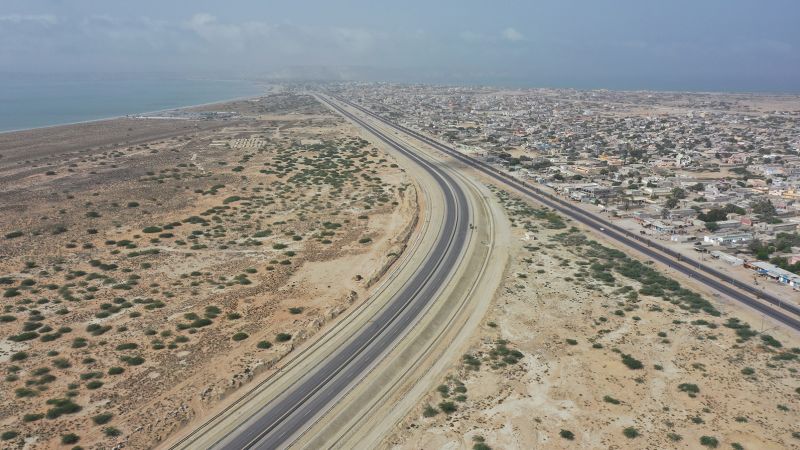Developing countries owe Chinese lenders at least $1.1 trillion, according to a new data analysis published Monday, which says more than half of the thousands of loans China has doled out over two decades are due as many borrowers struggle financially.
Overdue loan repayments to Chinese lenders are soaring, according to AidData, a university research lab at William & Mary in Virginia, which found that nearly 80% of China’s lending portfolio in the developing world is currently supporting countries in financial distress.
For years, Beijing marshalled its finances toward funding infrastructure across poorer countries – including under an effort that Chinese leader Xi Jinping branded as his flagship “Belt and Road Initiative,” which launched a decade ago this fall.
That funding flowed liberally into roads, airports, railways and power plants from Latin America to Southeast Asia and helped power economic growth among borrowing countries. Along the way, it drew many governments closer to Beijing and made China the world’s largest creditor, while also sparking accusations of irresponsible lending.



It happened in Sri Lanka a while ago. China financed the construction of a new deep water port. The port is finished, but Sri Lanka can’t service the debt so the new port is now under China’s control (99 years lease agreement).
Honestly, sounds like a pretty good deal? You now get access to a port and all the economic advantages that provides, but you don’t have to actually fund operations for it.
That’s a fucking bargain. If I could build a subway with someone else’s money in exchange for them taking all fare revenue, sign me the fuck up.
The thing is, Sri Lanka already have a deep water port before building the new one. They expected the new port would bring extra revenue, but turns out it’s not the case. The amount of ship docking in Sri Lanka doesn’t increase and they mostly use the old port. If the amount of ship docking in Sri Lanka stay stagnant and China managed to convince them to use the new port instead of the old one, then Sri Lanka may actually got even more fucked than currently is.
Then it literally doesn’t matter? China takes over the new port, nothing changes essentially.
It does matter for two reasons: if ships traffics stay stagnant but they prefer to dock in the new ports, Sri Lanka will get less money from port fees even though the transfer of goods stay the same. Also, China is known to employ their own people, bringing them over from the mainland, even for menial low wage jobs. This means less job opportunities for the locals around the new port.
The Port of Colombo is already operating at it’s 7m TEU capacity: 6.84m in 2020, 7.25m in 2021 and 6.86m in 2022. All this during a global recession and as the appreciating USD basically exports inflation abroad.
If your operating under the assumption that Sri Lankan growth is doomed, no wonder you’re so negative. It’s frankly a silly way to look at things: if a New York subway is operating at capacity and not seeing growth in ridership, do you just say “well, ridership is staying stagnant so adding a new subway line is just going to shift riders around and thus is not worth it.”
It’s a bad perspective for a developed country, but it’s even worse for a developing country that’s relying on increased trade to pull people out of poverty and improve quality of life. Those are the factors that matter. If Sri Lanka can’t increase trade volume, they’re super fucked and having one less port leaves them still super fucked. If Sri Lanka CAN increase trade volume, having one more port is obviously massively beneficial regardless of where the money goes (nevermind that port fees for the first decades of operation are often used to offset the capital cost of construction). Essentially, you’re picking up pennies in front of a freight train.
Well, every news piece I read about this seems to paint Sri Lanka economy as doomed. It’s good if they’re actually growing and the deal won’t negatively affect their growth in the long run.
Every news piece you read probably comes from a Western source that’s trying to paint China as the new “big bad” because a strong China threatens the profits of Western companies.
We’re already seeing it in Europe: even as China tapers away subsidies and moves towards offshoring production, Europe is trying to impose tariffs on Chinese electric vehicles that are simultaneously higher quality and cheaper than European manufacturers can dream of. Nevermind that China’s EV adoption is orders of magnitude faster than anywhere else in the world even as EV subsidies in China are basically gone now. In fact, most of China’s subsidies for nascent green tech industries exist in the form of IOUs that still haven’t been paid out because the CPC is a slow and lumbering beast and the companies don’t need them to be cash flow positive.
Frankly, if Sri Lanka’s economy stops growing, the Sri Lankan government has far greater issues than the slight reduction in port fees. Plus, let’s not pretend that Sri Lanka’s other options are better: India’s Adani took a majority stake of the India/US-funded expansion of the Port of Colombo: https://www.reuters.com/article/sri-lanka-crisis-port/sri-lanka-starts-building-700-mln-port-project-funded-by-indias-adani-idINL4N3252KT
https://www.bloomberg.com/news/articles/2023-11-08/us-invests-553-million-in-adani-s-sri-lanka-port-to-curb-china-s-influence
Oops.
Oof. I wonder how that will work in the case of infrastructure like roads and bridges–long term tolls? At some point it has to eat away at whatever good will the Chinese were trying to buy.
If you let them build military bases and run dubious assorted operations they are actually quite reasonable with repayment plans.
Source: am Australian
China now has a Hong Kong in Sri Lanka? Weird